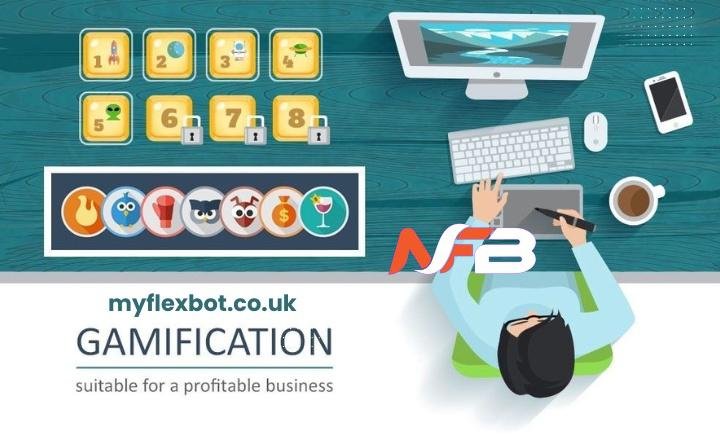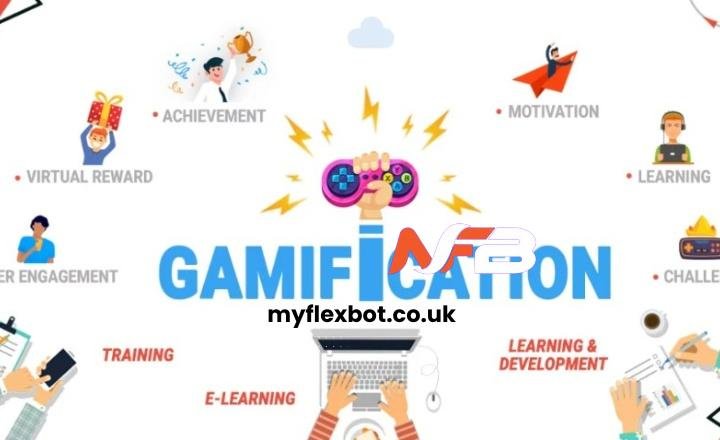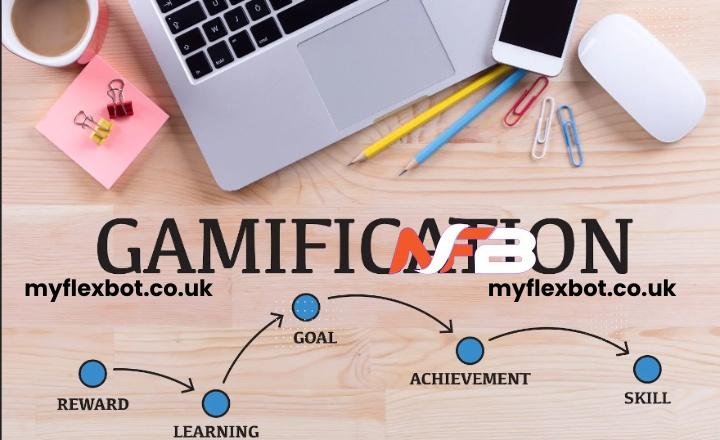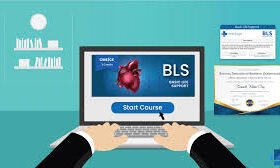Gamification involves integrating game mechanics into non-game settings, such as websites, online communities, learning management systems, or a company’s intranet, to boost participation. The goal is to involve consumers, employees, and partners, motivating them to collaborate, share, and interact. To maximize the benefits, businesses must carefully plan their gamification strategies, focus on content quality, and leverage data to guide ongoing improvements.
How does gamification work?
Gamification engages audiences by incorporating game mechanics and dynamics into online platforms, offering proactive guidance and feedback that drive the achievement of business goals and objectives. This article revealed how a successful gamification experience connects with participants’ emotions, highlighting the most impactful activities aligning with shared objectives.
As employees or customers interact with the program, they receive instant feedback on their performance and are directed toward the next steps for further achievements.
What Are Game Mechanics?
Game mechanics are the rules, systems, and rewards that dictate user interactions on digital platforms. Examples include points, levels, missions, leaderboards, badges, and progress tracking. These mechanics guide how participants engage with a gamification program, offering feedback, incentives, and a clear path for achievement.
What Are Game Dynamics?
Game dynamics involve the emotional and behavioral responses triggered by game mechanics. They include motivations such as competition via leaderboards, collaboration in team missions, community engagement through news feeds, the desire to collect unique badges, and the thrill of unlocking new missions.
What is the Business Value of Gamification?
Gamification is fundamentally about driving engagement, which in turn influences business results. Users learn how to interact effectively with a brand’s products, services, and overall business by engaging in gamification initiatives.

The benefits extend beyond user participation, as insights gained from gamification can shape marketing strategies, improve platform usage, and refine performance goals. Each interaction provides valuable data on user behaviour, revealing where participants focus their attention and what activities resonate with them.
What Is the Value of Gamification in the Workplace?
In the workplace, gamification is a powerful tool for influencing and motivating employee behaviour. It can be applied across various contexts to drive specific actions, ultimately enhancing employee engagement and boosting company performance.
Game mechanics clarify job roles by defining goals, tracking progress, providing instant feedback, and fostering collaboration and competition among colleagues.
What Are the Benefits of Workplace Gamification?
When implemented strategically, workplace gamification can significantly improve business outcomes. Key benefits include:
Enhanced adoption and utilization of learning management systems.
Improved employee retention and performance.
Enhanced knowledge sharing, leading to better service levels.
Boosted performance and satisfaction in roles such as call centre operations.
An advanced gamification platform like BI WORLDWIDE’s Bunchball Nitro® can uncover additional advantages. These include identifying the most effective incentives, understanding employee preferences, mapping workplace connections, and transforming the organization into a more agile and responsive entity.
Examples of Gamification Strategies
A gamification strategy may aim to increase engagement and strengthen retention for internal employees. By tapping into intrinsic motivators such as autonomy, mastery, purpose, and social interaction, gamification provides a sustainable foundation for long-term engagement.

The data-driven nature of gamification offers measurable results, allowing organizations to assess what works and make necessary adjustments.
Best Practices for Successful Gamification
Gamification boosts participation by integrating game mechanics into non-game environments, such as websites, online communities, learning management systems, and corporate intranets. The objective is to engage consumers, employees, and partners, driving them to collaborate, share, and interact. To fully realize these benefits, businesses must strategically plan their gamification efforts, prioritize high-quality content, and use data to refine and improve their approach continuously.
Achieving success with gamification requires meticulous planning and execution. Key best practices include:
Evaluate Content Quality:
Ensure that both the content and platforms are well-suited for gamification. While gamification can enhance an engaging experience, it cannot remedy poor content or a subpar user interface. Achieving success with gamification demands careful planning and precise execution.
Set a Time Frame:
Gamification is a long-term strategy that requires time to develop and implement effectively. Establish a clear timeline that allows users to build their experience and engagement gradually. This approach ensures sustained involvement and maximizes the impact of gamification initiatives.
Strategic Time-to-Market:
Implement gamification with a thoughtful strategy rather than rushing the process. Assess the required effort and determine the optimal timeline for integrating gamification into your platform. A well-planned approach prevents hasty decisions that could undermine the effectiveness of the gamification strategy.

Measure Results:
Clearly define your business goals and regularly assess the effectiveness of your gamification strategy. Use data and feedback to monitor progress, highlight successful aspects, and identify improvement areas. This ongoing evaluation helps in making informed adjustments to enhance the overall success of your gamification efforts.
The Role of Data in Gamification
Data is central to effective gamification, enabling businesses to track and analyze the performance of their gamification initiatives. Partnering with a vendor experienced in workplace gamification is essential to leverage data fully. Advanced platforms like Bunchball Nitro® capture relevant data and transform it into actionable insights, ensuring that gamification efforts are effective and sustainable.
Conclusion
Gamification is more than just a trend; it is a powerful strategy for driving engagement and achieving measurable business outcomes. Organizations can create an environment that motivates participants, whether employees or customers, by effectively combining game mechanics with game dynamics. In the workplace, gamification enhances performance, fosters collaboration, and supports continuous learning.















Leave a Reply